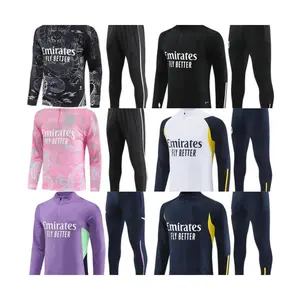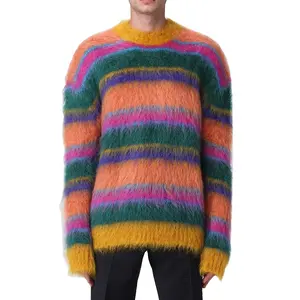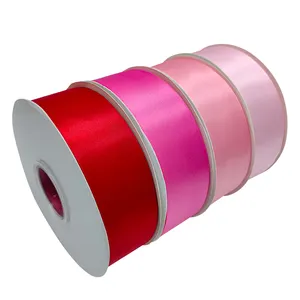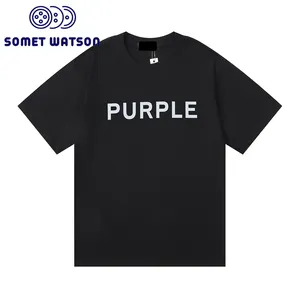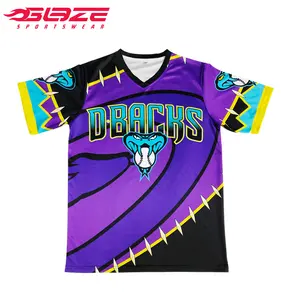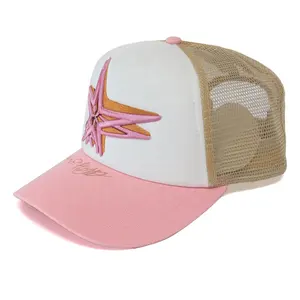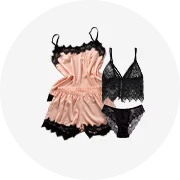Popular in your industry










































































Related Searches:
















































































































































Top categories
About african lace boubou
The African lace boubou, with its majestic drape and intricate embroidery, is not just a garment but a narrative woven into the fabric of West African culture. Once confined to the realms of traditional ceremonies and prestige, the boubou has elegantly paraded into the global fashion market, capturing the attention of retailers and fashion enthusiasts alike. This article delves into the rich tapestry of the boubou's history, its cultural significance, and its evolution from a traditional robe to a modern fashion statement. As we explore the various styles available on Alibaba.com and the unique features that make the boubou a must-have for global fashion retailers, we uncover the garment's versatility and its seamless blend of authenticity and contemporary appeal.
The Origin and Significance of African Lace Boubou
The boubou, a classic Senegalese robe, has deep roots in West African culture, worn across the region and in diasporic communities globally. Its origins may trace back to influences from North African Berbers or Tuaregs, introduced through ancient trans-Saharan trade. The boubou's form, while simple, comprising a single piece of fabric, has evolved to become a symbol of prestige, especially when adorned with intricate embroidery. This garment, traditionally a men's robe, has transcended gender boundaries, with women also adopting the boubou in various forms. The embroidered boubou stands as a pinnacle of prestige, often associated with religious and traditional ceremonies, embodying a blend of modesty and tradition. Its design, while maintaining a basic silhouette, has seen variations in length, embroidery, and color, reflecting a dynamic dialogue between tradition and modernity. The boubou's adaptability and enduring appeal make it a garment of cultural significance and a statement piece in the global fashion narrative.
African Lace Boubou: A Fashion Statement in Global Retail
The African lace boubou has transcended its traditional roots to become a significant fashion statement in global retail. This garment, known for its majestic presence and stately elegance, is recognized worldwide as a traditional West African attire. The boubou's journey from a regional costume to a piece celebrated in the diaspora and beyond illustrates its dynamic dialogue between tradition and modernity. The intricate embroidery and customizable designs that adorn the boubou reflect a heritage of prestige, once reserved for special occasions and religious ceremonies. Today, the boubou's adaptability has allowed it to maintain its cultural significance while embracing contemporary fashion trends. Its evolution is a testament to the garment's versatility and enduring appeal in the fashion industry. Retailers on platforms like Alibaba.com have the opportunity to offer this unique blend of tradition and modern style, catering to a diverse clientele seeking both authenticity and innovation in their wardrobe.
Types of African Lace Boubou Available on Alibaba.com
Alibaba.com showcases a diverse collection of African lace boubou, a traditional garment that has found its way into the global fashion scene. Among the offerings, one can find the classic Muslim spring women's full lace boubou, an elegant gown that reflects the rich cultural heritage of African attire. The platform also features the autumn African ankara boubou with three-quarter sleeves, which combines traditional patterns with a modern cut, catering to contemporary tastes while preserving its authentic essence.
For those seeking a blend of modesty and style, the traditional Muslim clothing lace kaftan dresses stand out. These boubous, often made from white chiffon, serve not only as a symbol of cultural identity but also as a versatile piece suitable for various occasions, from church gatherings to formal events. The assortment includes the Demure Bubu Gown, a popular choice among those who prefer a more understated elegance.
In addition to these, the platform also presents the ethnic boubou dress, which is a testament to the vibrant and colorful fashion of the Congo, and the modest Islamic boubou, which caters to the preferences of the Middle Eastern market. The collection is rounded off with the Mesh Embroidered Cape Dress, a modern twist on the traditional boubou that incorporates contemporary design elements like mesh and embroidery, appealing to a broad audience.
Retailers looking to enrich their offerings with traditional African attire will find Alibaba.com's selection of boubou dresses to be quite extensive, including flare sleeve designs and casual loose dresses that emphasize comfort without compromising on style. Each piece reflects the intricate craftsmanship and unique materials that make the boubou a standout garment in the world of fashion.
Key Features and Design Elements
The African lace boubou is a garment steeped in tradition, recognized globally for its West African roots. Its simple yet elegant cut, often richly embroidered around the neck, speaks to a dynamic dialogue between tradition and modernity. The boubou's design, while maintaining a basic form, is subject to variations in fashion. Notably, the grand boubou, with its majestic drape and presence, is a testament to the wearer's prestige. The garment's flowing sleeves and varying lengths, tailored traditionally by skilled artisans, are emblematic of its enduring appeal.
Embroidery is a key feature, adding to the boubou's distinction. Geometric and figural motifs, often imbued with cultural significance, adorn the fabric, enhancing its visual appeal and symbolic value. The neck opening varies in shape, with women's boubous featuring a large, rounded neck, while men's versions display a V-shape, often accompanied by a five-sided pocket. The use of indigo dye and contrasting patterns, such as alternating light and dark stripes, further accentuates the boubou's aesthetic and versatility.
The boubou's adaptability is also evident in its material composition. Cotton is commonly used, providing a canvas for intricate hand-sewn embroidery in various colors, which can be customized to the wearer's preference. This customization, along with the garment's conservative or elongated lengths, showcases the boubou's unique blend of personal expression and cultural fidelity.
Material and Craftsmanship: What Makes Boubou Unique
The boubou, a traditional West African garment, is a testament to the region's rich textile heritage. Its uniqueness lies in the materials and craftsmanship that go into its creation. The fabric often used is cotton damask, known as 'basin,' favored for its quality and texture. Tailors, skilled in the art of embroidery, embellish the boubou with intricate designs, traditionally in white or beige, but now also in a spectrum of vibrant colors. The embroidery threads, once silk from France, now also include polyester imitations, reflecting a blend of tradition and modernity.
The dyeing process of the boubou fabric is another aspect of its distinctiveness. Connoisseurs of the garment prefer hand-dyed fabrics, which women dyers achieve with rich hues, showcasing a deep cultural appreciation for color and technique. The dyeing methods range from stitch-resist or tie-dyes to starch resist or wax resist, each requiring months of meticulous work to achieve the final product. This labor-intensive process not only highlights the cultural significance of the boubou but also the dedication to preserving traditional methods.
In terms of design, the boubou is made by folding the fabric in half, creating a neck opening, and sewing the sides to form flowing sleeves. The neck style varies between genders, with women's boubous featuring a large, rounded neck and men's a V-shape with a distinctive pocket. The grand boubou, reaching ankle length, is the epitome of elegance and is often reserved for special occasions. These design elements contribute to the boubou's standing as a garment of prestige and cultural identity in West Africa.
Cultural Impact and Versatility in Fashion
The boubou, with its flowing silhouette and rich embroidery, is a garment steeped in West African tradition yet continues to evolve with fashion trends. Recognized globally as a traditional West African robe, the boubou is a symbol of the dynamic interplay between tradition and modernity. Its significance has been enhanced by the spread of Islam in the 19th century, which contributed to its popularity and variations in style. The boubou transcends the simple dichotomy of traditional African and modern European attire, representing a dialogue between cultures. It is not merely a static symbol of origin but a vibrant part of contemporary fashion, adaptable and influential. The embroidered boubou, in particular, stands as a pinnacle of prestige, often associated with religious and ceremonial events, domestic spaces, and modesty. The garment's versatility is evident in its adoption by both men and women, and its capacity to be customized with various geometric designs, making it a culturally impactful piece in the global fashion landscape.
Advantages of Sourcing Boubou for Retailers
For retailers looking to enrich their inventory with culturally significant and stylish garments, the African lace boubou presents a unique opportunity. Sourcing these garments offers a variety of advantages. The platform's extensive network of suppliers ensures access to authentic boubou designs, allowing retailers to offer genuine cultural apparel. The availability of different styles, from traditional to modern interpretations, caters to a diverse customer base seeking both heritage and fashion. The logistics partnerships facilitate smooth and reliable shipping, ensuring that retailers can receive their orders promptly, which is crucial for maintaining inventory levels and customer satisfaction. Payment options provide secure and convenient transactions, enhancing the purchasing experience for retailers. By featuring African lace boubou in their collections, retailers can tap into the narrative of quality craftsmanship and cultural richness, appealing to consumers who value these aspects in their clothing choices.
Marketing African Lace Boubou: Tips for Retailers
To effectively market African lace boubou, retailers should focus on building a strong brand identity that resonates with their artistic vision and connects with a niche market. This involves creating a distinctive brand beyond just a logo, encapsulating the essence of the designer's work through the clothes themselves.
Retailers should also enhance the shopping experience to justify premium pricing. An inviting boutique environment that is uncluttered, well-lit, and offers a private area for fittings can add significant value to the brand.
Utilizing social media platforms is crucial for generating and nurturing sales leads. Retailers should post with the intent to sell, providing clear contact information and following up with leads to close sales. Offering a variety of payment options and services like delivery can further increase sales conversions.
Diversifying the product portfolio is key for standing out in competitive local markets. Retailers can expand beyond clothing to include accessories, which can be produced in larger volumes and without size concerns. Collaborating with local craftsmen for accessory production can also enhance the brand's offerings.
Lastly, incorporating offline marketing tools such as flyers can complement online efforts. Flyers should communicate unique services, contact information, social media presence, and a compelling image that represents the brand's designs. Distributing flyers at local events and through various networks can broaden the brand's reach.
Conclusion
The African lace boubou stands as a testament to the enduring allure of cultural garments in the global fashion industry. Its journey from the heart of West Africa to the showcases of international retailers illustrates a successful melding of tradition and modernity. With its origins steeped in cultural significance and its evolution marked by adaptability and style, the boubou has transcended borders, becoming a versatile and prestigious addition to any wardrobe. Retailers have the opportunity to offer a piece of this rich heritage through a variety of styles, from the grand boubou to modern interpretations that resonate with today's fashion-forward consumers. By embracing the boubou's unique blend of elegance, craftsmanship, and cultural identity, retailers can enrich their collections and connect with a clientele that values both the story and the style behind their clothing. In marketing the African lace boubou, retailers are not just selling a garment; they are offering an experience, a piece of history, and a statement of fashion that is as timeless as it is contemporary.
